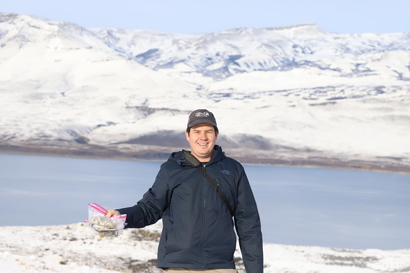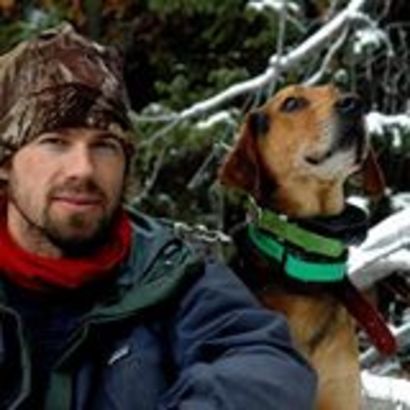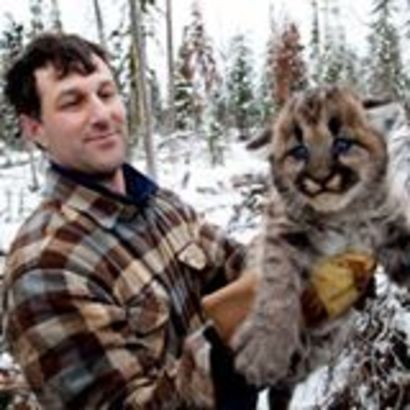About Us
How our sheep farm ended up being the best place in the world for puma watching
The conflict between farmers and the puma has existed for years, and in Chilean Patagonia, despite being illegal since the 1980s, the puma has been hunted as the only tool to manage the conflict without considering its importance for a healthy and balanced ecosystem. The previous generation of the Goic family, owners of the Estancia Laguna Amarga, also used to hunt the puma to protect their livelihood, sheep farming. Subsequently, sheep farming ceased to be their main activity, and most of their land remained unused for more than 25 years. The vegetation recovered, and the local fauna such as the guanaco and the puma returned to these lands. Together with the Torres del Paine National Park, this entire area provided a natural refuge for the local flora and fauna, and a healthy population of pumas began to grow.
Back in 2005, an interest in the elusive puma started to grow, and local wildlife operators started to offer wildlife observation and photography tours, searching for the puma inside and around the national park of Torres del Paine. The operators noticed that many of the pumas roamed the areas of Ea. Laguna Amarga, and a deal between the operators and the Goic family, got established around 2015 to control who could enter the property in the search of the puma.
This is when we got our eyes up for the value of our property and its importance to the life and conservation of the puma. In 2017, we created our own agency and operator to handle all activities inside the property of Ea. Laguna Amarga such as tourist tours, film productions, scientific research, and maintenance.
Being the first estancia to openly protect the puma and offer local operators and scientists an opportunity to conduct tourism and research activities was controversial. No other place in the world that has pumas had done anything similar. It was a process of learning over the years of best practices, understanding, and identifying the pumas that would have their territories on the property. Together with the wildlife operators, and advised by wildlife scientists, we have created a management plan with safety protocols, regulations, and guidelines when working for Leona Amarga to ensure a safe and good experience for visitors, guides, and wildlife.
To this day, the area of Ea. Laguna Amarga is a local fauna conservation area that offers the best conditions, not only for wildlife tourism activities but also for researchers and documentalists with a special interest in the largest feline in Chile.
___
Mission and Vision of Leona Amarga Expeditions:
We use tourism and science as a tool of conservation because we believe that to know is to protect (conocer es protejer). Through sustainable and good practices we are offering the best conditions in the world to carry out puma-watching activities, whether observation, filming, or photography.
Our mission is to create unique, safe, and memorable wildlife experiences for our visitors
Coexistence with predators while having livestock has been a challenge for centuries. At Leona Amarga, we work towards being a model of how wildlife conservation, especially of predators, can go hand in hand with tourism and agricultural activities. A model, that we hope, can be used in other parts of the world with similar challenges of coexistence, and in the future can help save threatened and endangered species. Therefore,
Our vision is to be an inspiring wildlife conservation model. We want to show that it is possible to coexist with the puma and that protecting local species can be economically and environmentally beneficial for landowners, nature, and the local economy and people.
___
This is how we do it:
We are covering 6 different areas that we believe are keys to getting to where we want with our mission and vision:
Conservation:
We have dedicated more than 5,000 hectares for conservation, which means we do not have any agricultural activities in these areas where we do wildlife observation. Furthermore, we have a network of roads to get to different points of the estancia, limiting the erosion to being only on these roads.
Science:
As a natural refuge for local flora and fauna, we are opening the doors for visitors with a scientific purpose. We believe that knowledge is an important key to conservation, and this is why we welcome scientists who would like to do investigations inside the property, as long as it is as non-invasive to the wildlife as possible.
Tourism:
Safety is our number one concern and key to a unique and memorable wildlife experience, and this is why we have developed safety protocols and guidelines for our operators, guides, and guests. Furthermore, we are always striving towards giving the best opportunities for our visitors, being observation or photography. We are creating a space, where people can come and observe pumas in their natural habitat, free of borders, and without fear of being hunted.
Socio-economic development and growth
The Leona Amarga family does not only consist of the Goic family but also our trusted guides and trackers. Many started out being trackers, and later guides, and today, many run their own companies, selling puma-watching tours. We want our partners to grow both professionally and personally, and support them in their journeys and projects. Collaboration and communication are key to learning more, and together with them, we are where we are today where everybody knows how to provide the best experience possible.
Film productions:
Over the years, we have had various film productions here to film the pumas inside the property. Wildlife documentaries are an important educational tool and a way to showcase the life of the pumas and learn more about them. We are open to film productions, as long as they have an educational purpose, and respect our wildlife.
Sheep Farming:
Livestock farming is part of our history and to preserve our cultural heritage and historical legacy, sheep farming will always be part of our livelihood, but on a smaller scale, mostly for self-efficient purposes. We are using new and more sustainable ways of land - and livestock management, where coexisting with the local fauna is part of it. Read more about the tools we use HERE


